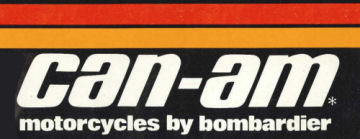


Section 6: Race Stats and Post Race Modifications
Twin-Air air filter -- TRASH!
Since we had a fresh motor, I had ordered an NOS Twin Air filter to replace the 25 year old OEM Unifilter. Unfortunately, while practice riding at Sand Hill the old NOSTulare4a.jpg (30117 bytes) foam on the TwinAir disintegrated the first time Jim rode the bike. I called VMX and told them what happened. They said that they had encountered this problem before on the TwinAir's. Although I was rather frustrated that they didn't tell me this to begin with, they were very good about replacing the unit with a Unifilter for $5 more. I noticed that they no longer offer the NOS TwinAir's in their new catalogue so they obviously took measures to insure that it doesn't happen again. The Unifilter's fit much better and appear to be made of a better quality material. The Uni is easily worth the $21 price tag.
Blown Base Gasket The bike blew a base gasket the first time Jim rode it. We assume this to be the result of starting the new motor with an obstructed expansion chamber. While the pipe was being stored in the garage, mice had packed the pipe with cotton. I didn't notice this little problem and started the engine with a completely plugged exhaust. I ran it for about 30 seconds before I realized the problem existed. The base gasket leak didn't appear until I washed the bike after the first ride. Surprisingly, the only symptom was a slight decrease in low end power. Upon inspection of the top end the piston showed no sign of premature wear. As a matter of fact, the piston didn't look as if the engine had been run at all. I give much of the credit to the Castrol full synthetic oil we are running in the injection system. It's expensive at $8 a quart, and the reservoir holds over 3 quarts without the baffle, but the injection system uses the oil very sparingly. To date the bike has seen 4 motos and 2 long practice sessions and I still haven't had to top off the reservoir.
Gearing
Because of the explosive powerband and Jim's inexperience on a 125 we located a 56T rear sprocket (Thanks Eric Weaver!) to mellow out the power delivery. The rear sprocket is so large that we received a bit of ribbing from the other riders. However, the bike still had good top end so we decided to give it a try. Jim didn't get a chance to ride the bike before Hollister but after morning practice he felt confident that it would be fine. The Hollister track had a couple of sections that consisted of deep sand and the new gearing allowed the small motor to pull higher gears through those areas.
The second time Jim raced the bike was at Tulare. It was raining the day before so I expected a giant mud bog and left the 13/56 setup intact. But it didn't rain the day of the race and the track was very flat with long straight-aways. It was extremely fast for a motocross track. Jim said that he ran out of gears on a couple of the back straight-aways but we decided to leave the gearing alone so he didn't have to readjust to the new gearing in the short 6 lap motos. In hindsight, I think a 14T countershaft sprocket would have moved him up at least one position in the race. But I believe that the 13/56 combination would be still be good for novice riders on most tracks. The only problem with the 13/56 gearing is that it requires more shifting on the rider's part. However, the overall performance seems to outweigh the extra effort.
Suspension
The 65lb. springs on the Progressive Suspension shocks seem to work well for the 200+lb. novice rider. A fast intermediate or an expert may want to go with the 95lb springs. I also installed HD Betor fork springs from Speed & Sport after the first practice session because Jim was bottoming out the forks quite often. The combination of HD springs and 220cc of fork oil in each leg reduced the bottoming and made the front end more "user friendly." The front suspension still bottoms but let's face it, 6.5" of travel only goes so far on a motocross track. For the most part much of the bottoming occurs only during hard landings from big jumps.
Clutch
CanAm clutches are very sturdy. But they have stiff lever pull that is hard to overcome. After the Hollister race, I installed a new TerryCable (from Speed & Sport about $18) which reduced the friction on the cable and improved the feel. It willlogo3a.gif (2390 bytes) never be like a Japanese bike because of the way the CanAm cable is routed. If you look at the cable on your CanAm, you will notice that it enters the engine from the rear and has to make a 180 degree turn near the carburetor. I believe this to be a design flaw and there is little that can be done to improve the clutch pull. It would be much better if the CanAm engineers had designed the engine so the cable pulled straight (angled toward the front of the engine) but that, as we know, is history. Just keep using a fresh cable, keep it properly adjusted, and oil it often.